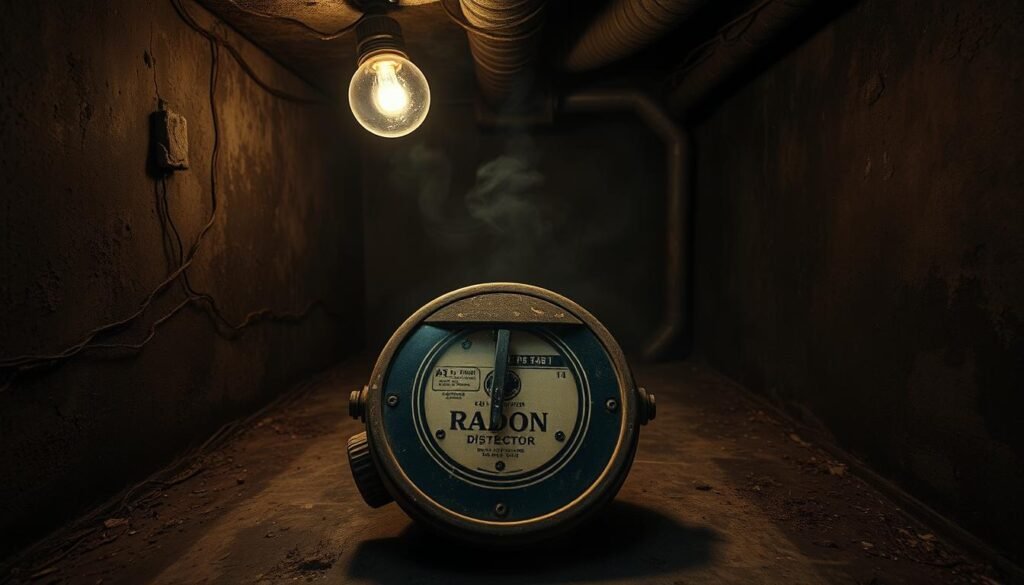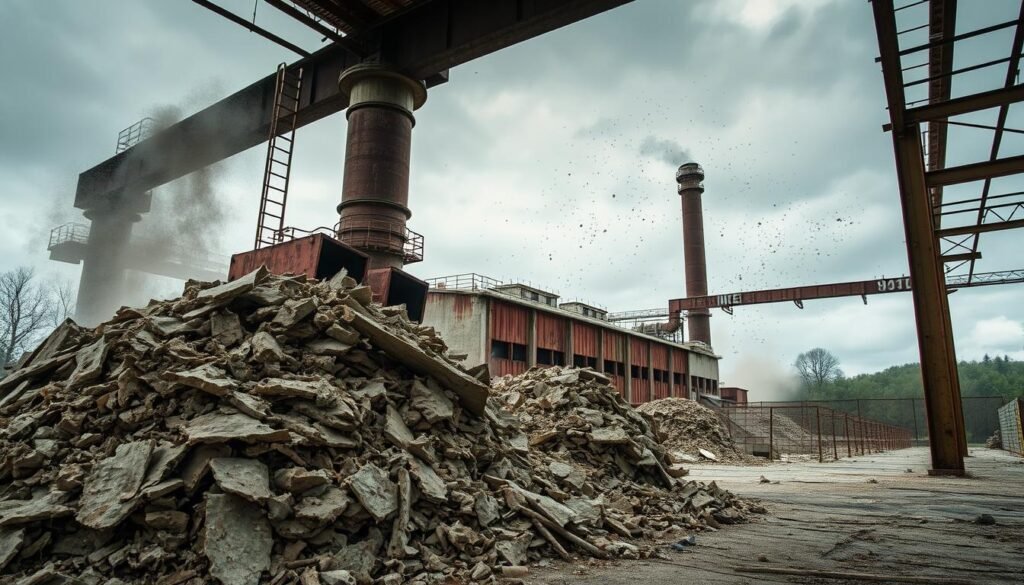Cigarette smoking causes about 80% to 90% of lung cancer deaths in the U.S. It’s vital to know the lung cancer risk factors that affect our health. Smokers are 15 to 30 times more likely to get lung cancer than non-smokers. This fact shows the big role that smoking, secondhand smoke, radon, and asbestos play in developing lung cancer.
It’s important to understand what increases lung cancer risk for prevention and early detection. Factors we can’t change, like family history, and ones we can, like how we live, are big in deciding lung cancer risk. By knowing these risks, we can do things to lower our chance of getting lung cancer. For more details, go to Cancer.org.
Key Takeaways
- Lung cancer is the top cause of cancer deaths worldwide.
- Smoking causes 80-90% of lung cancer deaths.
- Smokers are much more likely to develop lung cancer.
- Being around secondhand smoke also leads to lung cancer.
- Radon and asbestos exposure increase lung cancer risks.
- Pollution can make developing lung cancer more likely.
- Taking steps early can reduce the risk of lung cancer.
The Impact of Smoking on Lung Cancer Risk
Smoking is the main cause of lung cancer deaths. It accounts for 80% to 90% of them. Smokers are much more likely to get lung cancer than non-smokers. This risk goes up based on how long and how much they smoke.
Different smoking forms like cigarettes, cigars, and pipes play a huge role in lung cancer cases.
Statistics on Smoking and Lung Cancer
The numbers show how serious smoking-related lung cancer is. Nearly 90% of lung cancer in men and 70% to 80% in women come from cigarette smoking. Lung cancer causes 31% of cancer deaths in men and 26% in women in the US. It’s expected to cause over a million deaths worldwide.
Effects of Cigarette, Cigar, and Pipe Smoking
Cigarettes have over 7,000 chemicals, many of which cause cancer. Cigar and pipe smoking also lead to lung cancer. They are as dangerous as cigarettes.
Being around smoke, even if you don’t smoke, can raise your lung cancer risk by 20% to 30%. This is especially true for people living with smokers.
The harmful effects of smoking are a big worry in lung cancer. It’s vital to educate people about the risks of smoking different products.
| Types of Smoking | Increased Risk of Lung Cancer |
|---|---|
| Cigarette Smoking | 15-30 times higher than non-smokers |
| Cigar Smoking | Similar risk profile as cigarettes |
| Pipe Smoking | Comparable to cigarette risk |
| Secondhand Smoke | 20-30% increased risk for non-smokers |
Secondhand Smoke Exposure
People who don’t smoke can still face serious health risks from secondhand smoke. This harmful smoke can lead to major health problems. This includes a higher chance of lung cancer for non-smokers. The dangers apply not just over time, but from short exposures too.
Understanding Secondhand Smoke Risks
Secondhand smoke has over 7,000 chemicals, with 69 being carcinogens like arsenic, and formaldehyde. Non-smokers exposed to it are 20% to 30% more likely to get lung cancer. Each year, more than 7,300 non-smokers in the U.S. die from lung cancer due to secondhand smoke. Surprisingly, Black adults face over twice the exposure as white and Mexican Americans.
Statistics on Non-Smokers and Lung Cancer
Secondhand smoke impacts more than health. It also hurts the economy, costing about $7.2 billion in lost productivity in 2017. It increases the risks for children of sudden death and serious lung infections. The U.S. has laws to lower these dangers, like bans on smoking in public areas. Yet, the risk is still there.
| Statistic | Value |
|---|---|
| Annual lung cancer deaths from secondhand smoke | 7,300 |
| Increased lung cancer risk for non-smokers | 20%-30% |
| Annual deaths related to secondhand smoke exposure | More than 19,000 |
| Economic loss due to secondhand smoke | $7.2 billion |
| Higher prevalence of secondhand smoke exposure (Black adults vs. White/Mexican Americans) | More than 2 times |

It’s key to know the dangers of secondhand smoke for public health. Reducing exposure helps not just smokers but non-smokers too, especially kids. Keeping awareness up and pushing for laws is key to fight this issue. For more info, see the CDC’s resources.
Exposure to Radon
Radon is a colorless and odorless gas from the earth. It can build up inside, especially in basements and places with little air flow. This gas comes from uranium breaking down in soil and rocks. Being around radon a lot is a big health risk. It’s the top reason non-smokers get lung cancer and the second for smokers. Knowing about radon and its dangers shows why it’s vital to check and improve the air inside homes.
What is Radon and How Does it Affect Health?
Radon increases the chance of getting lung cancer. This gas gets into buildings from the ground and can reach unsafe levels. Breathing in radon particles harms the lungs, causing changes that may lead to cancer. The International Agency for Research on Cancer says radon is a cancer risk. About 20,000 lung cancer deaths a year in the U.S. are because of radon. This makes understanding radon key for keeping people healthy.
Testing Your Home for Radon Levels
Checking homes for radon is very important. Radon levels inside can change, with around 1.3 picocuries per liter (pCi/L) being normal. But, almost 1 out of 15 U.S. homes have higher radon levels. It’s advised to act if levels are 4.0 pCi/L or more. Homeowners can get test kits from health departments or online, to find out radon levels. Taking steps early to deal with radon can help avoid risks.

Asbestos Exposure and Lung Cancer
Asbestos is a big health issue, mainly in jobs like building and ship work. Breathing in asbestos fibers can cause severe lung problems, including lung cancer and mesothelioma. Workers exposed to asbestos are at higher risk, even more when they smoke.
The Dangers of Working with Asbestos
Workers in many jobs face risks from asbestos, known as a cancer-causing substance by health agencies. This danger comes from asbestos fibers that can enter and stay in the lungs. Conditions like asbestosis or pleural plaques might develop, increasing the cancer risk.
Lung Cancer and Mesothelioma Connection
Asbestos exposure leads to a lot of lung cancer cases in the U.S., nearly 37.5% of work-related ones. It causes a lot more lung cancer than mesothelioma, but both start similarly. People exposed, including through secondary exposure, need to watch for symptoms and get checked.
It’s important to understand these links because catching these diseases early can help a lot. For more details on the differences, signs, and treatments, visit this informative link.

Air Pollution as a Risk Factor
Air pollution is a major risk for lung cancer in big cities. Being around a lot of fine dust and harmful things can hurt lung tissue. It might even make cancer cells grow. The World Health Organization (WHO) has found a link between air pollution and lung cancer risk.
As more people move to cities, we see how the environment affects our health more clearly.
How Air Pollution Contributes to Lung Cancer Risk
Things like diesel exhaust and tiny particles in the air can raise lung cancer risk. Studies show that people exposed to these often might be more likely to get lung cancer. Air pollution’s effect on lung cancer is a big concern for public health.
Children and the elderly are especially at risk from these dangers.
Cities with Higher Lung Cancer Incidence due to Air Pollution
In many cities, there’s a clear link between air pollution and more lung cancer cases. Areas with lots of particulate matter have higher lung cancer rates. The U.S. has worked to lower air pollution with the Clean Air Act.
But, challenges remain, especially in poorer countries. This shows why we must focus on environmental factors and lung cancer risk. For more info on lung cancer causes, check this resource.
Other Occupational Hazards
Many workers face a higher risk of lung cancer due to job hazards. Many harmful substances at work can cause cancer. This situation calls for solid prevention plans to keep workplaces safe. Substances like arsenic, silica, and diesel exhaust are dangerous in many fields.
Identifying Workplace Carcinogens
It’s important to know about workplace carcinogens to protect workers. Different jobs have various cancer-causing agents. For example:
- Asbestos in construction and insulation materials.
- Arsenic and cadmium in mining activities.
- Silica dust exposure in construction and manufacturing jobs.
- Formaldehyde in the production of wood and certain textiles.
We must pinpoint and evaluate work hazards to lower lung cancer risks. Studies show that the risk of cancer rises with the level of exposure. The International Agency for Research on Cancer (IARC) finds over 165 harmful agents in jobs.
Preventing Exposure in High-Risk Jobs
To cut down cancer risks from work, we need good prevention strategies. Companies should take steps such as:
- Using safety gear to protect against harmful substances.
- Improving air systems to remove dangerous chemicals.
- Regularly checking for risks and training employees.
- Adding safety and legal rules into everyday work life.
In jobs like mining and transport, keeping employees safe is key. The Cancer Council offers advice on stopping cancer at work. Dealing with job-related carcinogens can make everyone healthier.
| Occupational Hazard | Common Sources | Risk Level |
|---|---|---|
| Asbestos | Construction, insulation | High |
| Arsenic | Mining, smelting | Medium |
| Silica | Construction, manufacturing | High |
| Formaldehyde | Wood products, textiles | Medium |
Genetic Factors Influencing Lung Cancer Development
Genes play a big role in lung cancer. Studies show that if your family has had lung cancer, your risk goes up. Mutations in genes like TP53, EGFR, and KRAS make lung cancer, especially non-small cell lung cancer, more likely. This type accounts for about 80% of cases.
People with lung cancer in their family might need special screening. By knowing the risks and genetic factors, doctors can focus on preventing it better. Even though we don’t know all the genes involved, understanding that these genes often follow an autosomal dominant pattern is key. It shows why knowing your family’s health history is crucial for evaluating lung cancer risk.
Genetic counseling can help if you’re worried about your risk for lung cancer due to family history. Health experts can explain how genetics might affect you. Knowing about your genetic risk can motivate you to take charge of your health. It helps you work to lower your chances of developing lung cancer.
Which of the Following are Risk Factors for the Development of Lung Cancer
Knowing the risk factors for lung cancer is crucial for everyone. These factors split into two groups: those you can change and those you can’t. Understanding them helps people make smart choices for their health and life.
Unchangeable Risk Factors: Age and Family History
Age is a big factor in lung cancer risk. Most people are around 72 when they get diagnosed. Also, if lung cancer runs in your family, your risk goes up. Certain genes, like the p53 tumor suppressor gene, increase this risk too. Knowing about these unchangeable risk factors is key to taking early action for your health.
Changeable Risk Factors: Lifestyle and Environmental Exposures
Changeable risk factors mostly involve how you live. Smoking is a major one. Smokers are 22 times more likely to get lung cancer than non-smokers. This bad habit is behind 85% of lung cancer cases. Being around smoke and harmful toxins also ups your risk. But, eating lots of fruits and veggies can lower it.
Checking your home for radon is another way to stay safe. To learn more about what causes lung cancer, check out this resource.
Conclusion
Knowing the different risk factors for lung cancer is key to stopping it. Most cases, about 85%, are due to tobacco use. Smoking harms not just smokers but also those around them through secondhand smoke. This highlights the urgent need for strong health education about cancer.
Being aware of the dangers and the importance of screening can help people choose wisely. They can take steps to protect their health.
But, it’s not just about smoking. Genetics, exposure to dangerous substances like asbestos, and pollution also increase lung cancer risks. Knowing these risks helps create specific ways to fight lung cancer. For example, workers in certain jobs might face more dangers, showing the need for better safety at work.
To fight lung cancer, educating everyone about its risks is crucial. With new research, focusing on education can help people make healthier choices. This will lower lung cancer rates in communities over time.